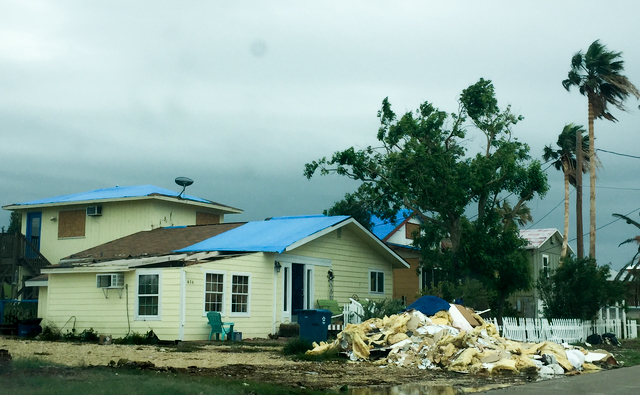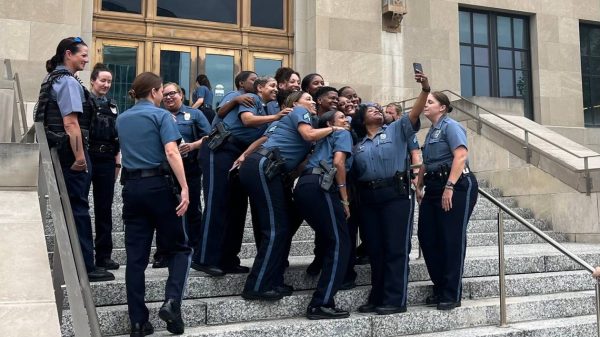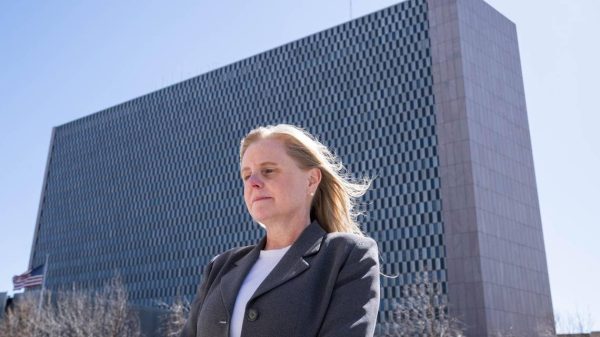Much work looms after Harvey
Damaged house in Port Aransas, Texas
Over the last two months, three hurricanes have hit different parts of the Gulf of Mexico. First, there was Hurricane Harvey in the Texas, then Hurricane Irma in Florida, and most recently Hurricane Maria in the Caribbean.
Park University campus centers didn’t suffer any serious damage from these hurricanes, but they did offer help via emails sent out on August 31 in regards to Hurricane Harvey. An email to students and a slightly different email to faculty were sent out by Jayme Uden, the associate vice president and dean of students. The emails said, “Our warm thoughts and well-wishes are with everyone impacted by the devastating effects of Hurricane/Tropical Storm Harvey.”
The letter to students encouraged those whose studies would be interrupted by the storm to “contact Park’s Student Success Team … to discuss ways to ensure [their] continued academic success.” The letter to faculty encouraged that they “advise students to contact Park’s Student Success Team.” It also said, “If you are an adjunct faculty member whose ability to conduct online classes has been impacted by the storm, please contact [email protected] for assistance.”
Even though Hurricane Harvey finished hitting Texas on September 3, clean-up is still going on in damaged parts of the state. Fall break provided an opportunity to travel south and see the damage first hand.
Houston, Texas, experienced severe flooding as it was on the outskirts of the hurricane where most of the rains hit. Additionally, floodgates in Houston had to be opened to prevent damage to dams, which caused even more flooding.
Across the Gulf shoreline, a mandatory evacuation was put in place as bridges closed and ferries shut down. Basements aren’t really possible in many of these areas because of the quality of the ground and the flooding that would be caused, so there wasn’t really any way to stay safe underground as a Midwesterner might in a tornado. In fact, to avoid flooding, many houses in this area – especially those close to the shoreline – are built on stilts above the ground. As a result, taking cover was difficult and damages were significant.
Port Aransas, Texas, was directly hit by Hurricane Harvey and is still in the process of being rebuilt. Brightly colored houses high above the ground would normally create a picturesque scene, but the post-hurricane version of these houses have boards in the place of broken windows and blue tarps spread over damaged roofs. Water-damaged belongings and mattresses, discarded quickly to prevent molding, are in piles all over the small tourism-reliant town. Utility poles and palm trees lean at bizarre angles, and the bridge to town passes multiple hundred-foot-tall piles of debris.
Tourist hot spots, candy stores, souvenir shops and restaurants all show signs of damage, too, and most are still in the process of rebuilding. Some have been completely gutted and most are missing front windows and parts of their roofs. In front of these, items like sun visors and boogie boards litter the ground – they are bright colors among the broken glass, waterlogged insulation and piles of discarded wooden boards.
The fire department has trucks and emergency vehicles from all over Texas parked out front – responders have come from San Antonio, Austin, and other cities to help take care of Port Aransas.
One local business owner, 48-year-old Beth Owens, owns three restaurants and a marina with her husband. One of the restaurants is still open – everything else was too badly damaged.
“The fishing marina was blown away,” Owens said. “We’ve had to take it from the ground up.”
The restaurant that is still open, Fins, is right next to the marina – directly on the water – and it suffered serious water damage.
“My other two restaurants had flooding damage,” she said. “They’re here in Port Aransas, and they’re closed for a couple months for repairs.”
“We’re talking a lot of money,” Owens said. “We had insurance, but we couldn’t wait for insurance. We had to get our place open, get our employees back. We had 140 [employees] the week before the hurricane hit. Now we’re probably down to 30. And a lot of our employees, their homes were damaged too, so they’ve had to relocate.”
“Port Aransas is supported by tourism alone,” Owens said. “It was important to us to get our employees back, get the economy going again. We have to get tourists coming back to Port Aransas – that’s what is going to keep Port Aransas living.”
Indeed, many of the establishments in Port Aransas are tourist locations. The city’s economy relies on tourism, but with so many damages it’s hurting badly. Some hotels and restaurants have been able to open up again, or are planning to do so soon, and these places want to start taking reservations and bring tourists back as soon as possible.
Owens also wanted to encourage those interested in helping out to either visit Port Aransas or to make monetary donations. She said, “The Port Aransas Education Foundation has been around for over eleven years, and the money goes directly to the school. Another is Rebuild Port Aransas, and that money is getting disbursed between residents and small businesses.”
There is still much work to be done to rebuild after these tragedies, especially in Puerto Rico. The U.S. citizens of Puerto Rico are facing issues such as power outages and lack of access to safe drinking water. One way to show support or donate to the cause is to visit publicgood.com.
Your donation will support the student journalists of Park University. Your contribution will allow us to cover our annual website hosting costs, freeing up other funds for equipment, printing and training.








